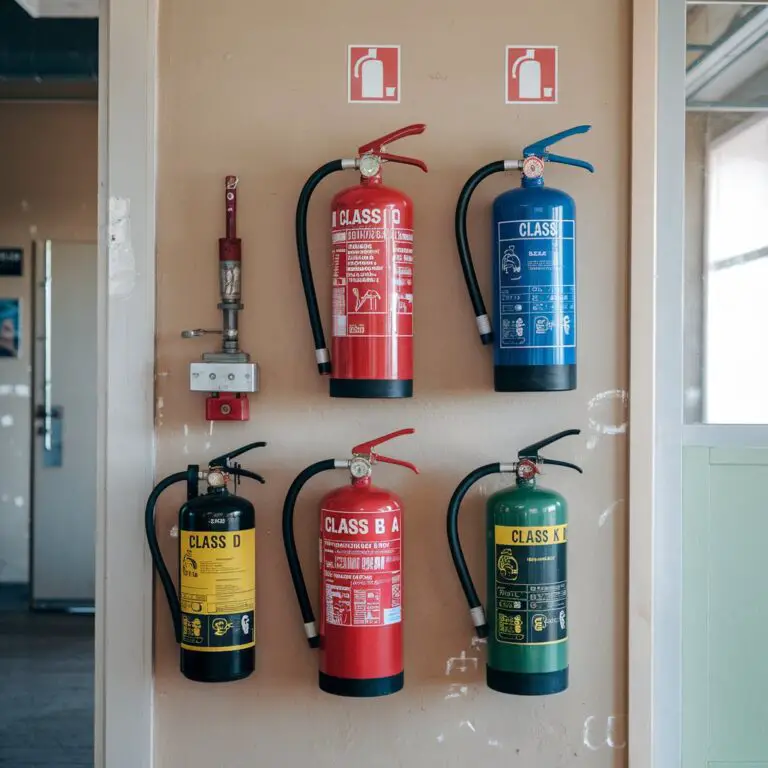Fire Extinguisher Types and Their Importance
Fire extinguishers are vital tools in controlling fires at their earliest stages, helping to prevent serious damage and injury. Choosing the correct type of fire extinguisher is crucial as each type is designed to tackle different kinds of fires. Whether it’s for a home or workplace, understanding fire extinguisher types can greatly enhance safety.
The Basics of Fire Classifications
To understand fire extinguisher types, it’s essential to know the fire classifications:
Each class requires a unique approach, which is why different fire extinguisher types exist to cater to these classifications.
Common Types of Fire Extinguishers
1. Water-Based Fire Extinguishers (Class A)
Water-based extinguishers are ideal for Class A fires and are the most common type in homes. These extinguishers cool down the burning materials by soaking them with water, reducing heat and eventually putting out the fire.
Suggested Product: First Alert Standard Home Fire Extinguisher – This extinguisher is designed for Class A fires, making it ideal for common household areas. Another option is the Kidde 1A10BC Fire Extinguisher, a versatile extinguisher that works well for home use.
2. Foam Fire Extinguishers (Class A and B)
Foam extinguishers work well on Class A and B fires. The foam covers the flammable liquid surface, cutting off oxygen supply and stopping the fire. While versatile, foam extinguishers shouldn’t be used on electrical fires.
Suggested Product: Amerex 240 Class A Fire Extinguisher – Great for homes or garages where liquid hazards may be present. For smaller fires, consider the Fire Gone Foam Suppressant Spray, which is compact and effective for kitchen or workshop use.
3. Dry Chemical Fire Extinguishers (Multi-Class A, B, C)
Dry chemical extinguishers are highly effective on Class A, B, and C fires, making them one of the most versatile options. They release a cloud of non-combustible chemicals that disrupt the fire’s chemical reaction.
Suggested Product: Kidde Pro Series Dry Chemical Fire Extinguisher – This model covers multiple classes of fires, making it suitable for diverse environments. The First Alert Rechargeable Home Fire Extinguisher is another excellent option, providing reusability and effectiveness against most fire types.
4. Carbon Dioxide (CO₂) Extinguishers (Class B and C)
CO₂ extinguishers are great for Class B and C fires, often in environments with flammable liquids or electrical equipment. By displacing oxygen around the fire, CO₂ extinguishers can swiftly suffocate the flames.
Suggested Product: Amerex B500 CO₂ Fire Extinguisher – Ideal for garages and areas with electrical risks. For more intensive environments, the Badger Advantage Carbon Dioxide Fire Extinguisher is effective for both flammable liquid and electrical fires.
5. Wet Chemical Fire Extinguishers (Class K)
Wet chemical extinguishers are essential for commercial kitchens, where cooking oil fires are a risk. They cool the fire and create a barrier between the oil and oxygen, effectively extinguishing the fire.
Suggested Product: Amerex 2.5 Gallon Wet Chemical Fire Extinguisher – A must-have for commercial kitchens, effective on cooking oil fires. The Kidde Wet Chemical Fire Extinguisher is a smaller, home-friendly option that’s easy to store in residential kitchens.
Specialty Fire Extinguishers
Some fire extinguishers are tailored for specific environments or fire classes:
- Class D Fire Extinguishers: These handle combustible metal fires often found in laboratories and industrial settings.
- Specialized Foam Extinguishers: These are suited for airport hangars and hazardous liquid storage areas.
Placement and Maintenance of Fire Extinguishers
Having the right extinguisher type is only part of the safety equation. Placement and maintenance are equally critical. Extinguishers should be:
- Mounted in easy-to-access locations.
- Inspected regularly to ensure they’re fully charged.
- Replaced or serviced according to manufacturer guidelines.
Suggested Product: Consider mounting solutions like the Adjustable Fire Extinguisher Wall Mount Bracket for easy and safe storage, or use protective Fire Extinguisher Cabinets to keep extinguishers secure yet accessible.
Conclusion
Knowing the different fire extinguisher types can prepare you for a wide range of emergencies. Ensure your home or workplace has the right extinguishers for optimal safety, and consider adding essential products to your safety gear for a comprehensive approach.

